JAK/STAT Signaling
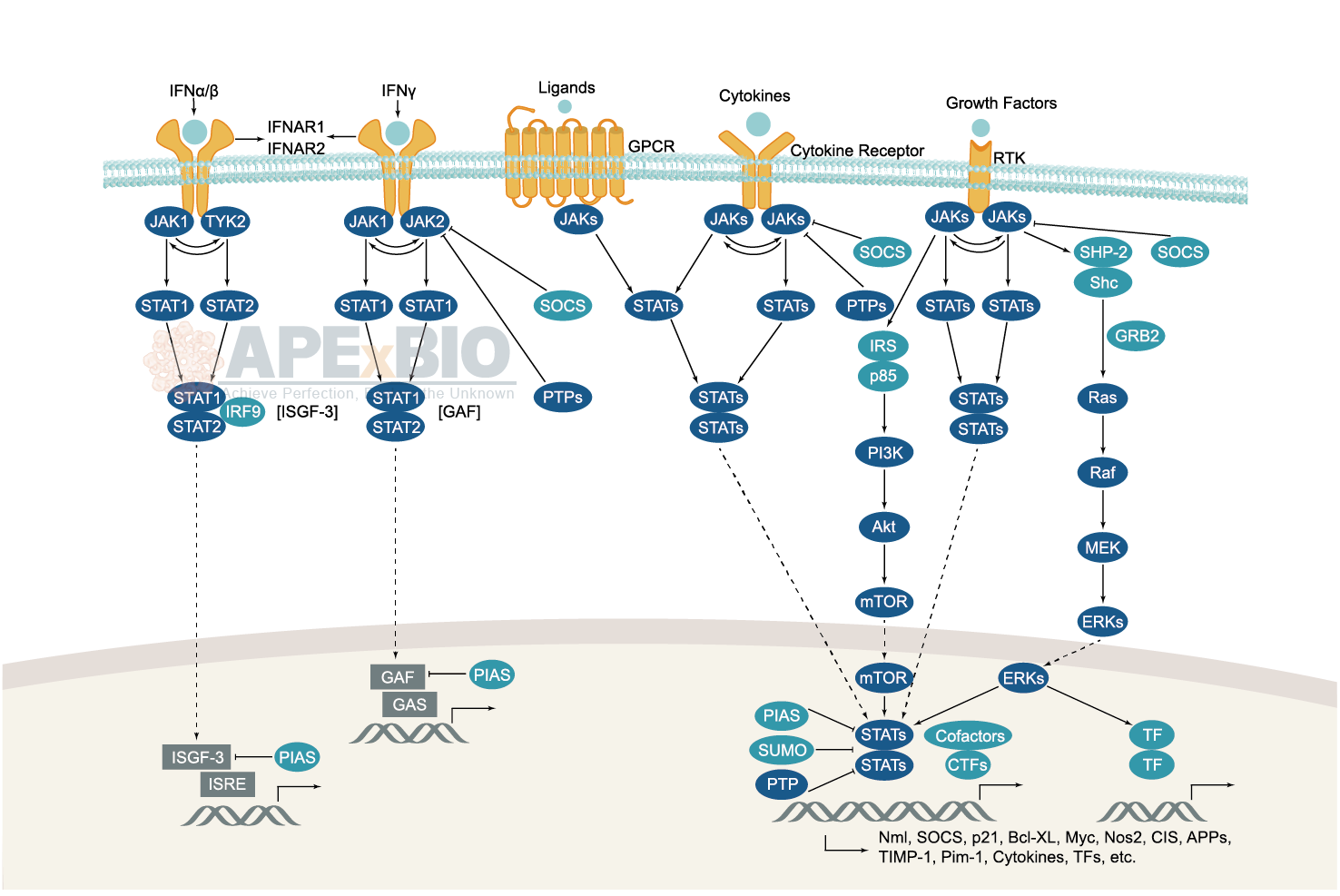
Various ligands including cytokines (e.g. interferons and interleukins), hormones (e.g. erythropoietin and growth hormone) and their cell surface receptors activate JAK proteins, which autophosphorylate, and then phosphorylate the receptor. Subsequently, JAKs phosphorylate a specific tyrosine residue on the STAT protein, promoting dimerization via SH2 domains. The activated STATs form homo-/heterodimers and translocate to the nucleus to trigger target gene transcription. In addition, suppressors of cytokine signaling (SOCS) family inhibit receptor signaling via homologous or heterologous feedback regulation. Dysregulation in JAK/STAT signaling is associated with diseases such as atherosclerosis, immunodeficiencies and cancer.
-
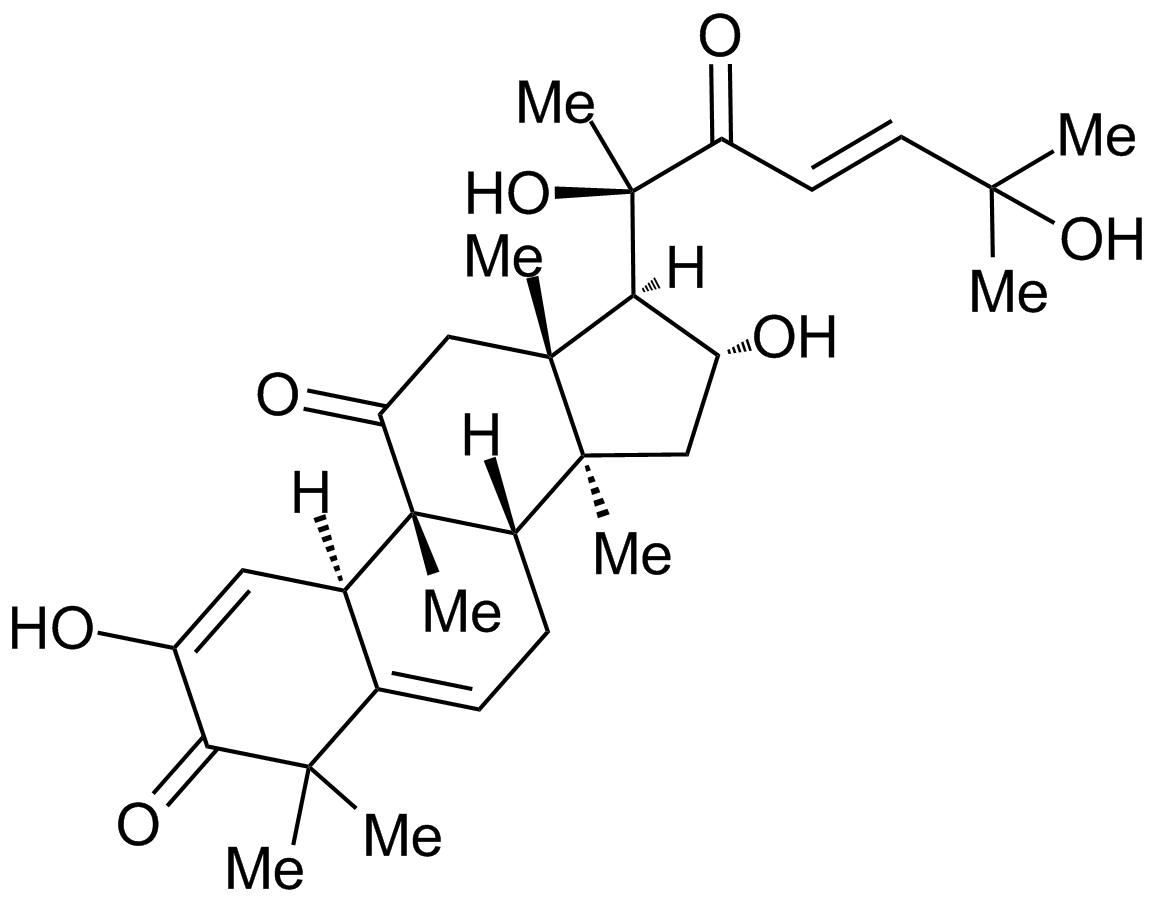 A4512 Cucurbitacin ITarget: STAT|JAKSummary: STAT3/JAK2 signaling inhibitor
A4512 Cucurbitacin ITarget: STAT|JAKSummary: STAT3/JAK2 signaling inhibitor -
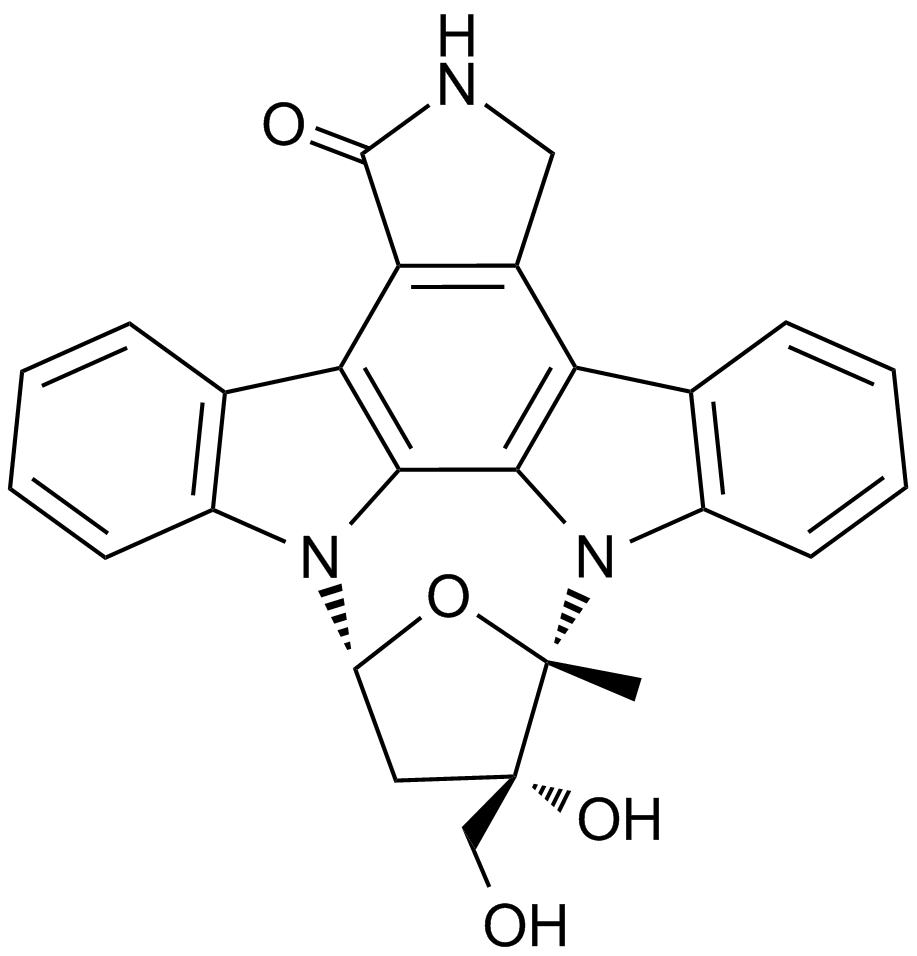 A4513 Lestaurtinib1 CitationSummary: JAK2/FLT3/TrkA inhibitor
A4513 Lestaurtinib1 CitationSummary: JAK2/FLT3/TrkA inhibitor -
 A4515 SD 1008Summary: Inhibitor of JAK2/STAT3 signaling pathway,apoptosis inducer
A4515 SD 1008Summary: Inhibitor of JAK2/STAT3 signaling pathway,apoptosis inducer -
 A4516 TCS 21311Summary: JAK3 inhibitor
A4516 TCS 21311Summary: JAK3 inhibitor -
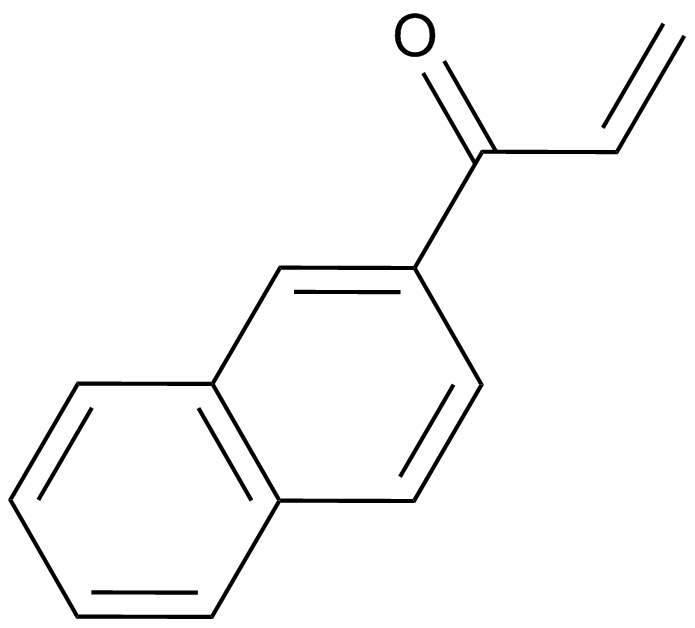 A4517 ZM 449829Summary: JAK3 inhibitor
A4517 ZM 449829Summary: JAK3 inhibitor -
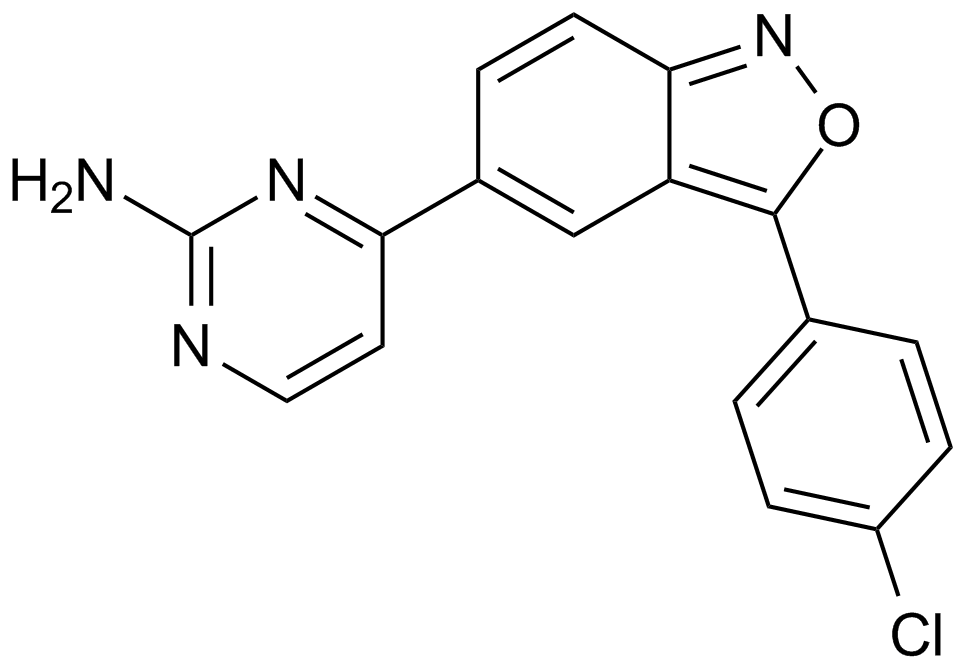 A4519 PIM-1 Inhibitor 2Summary: Potent Pim-1 kinase inhibitor
A4519 PIM-1 Inhibitor 2Summary: Potent Pim-1 kinase inhibitor -
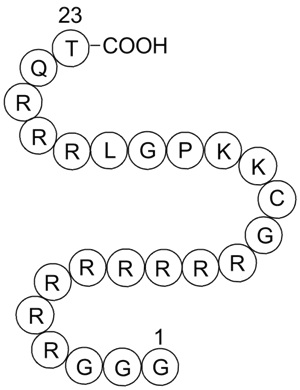 A4520 R8-T198wtSummary: Pim-1 kinase inhibitor
A4520 R8-T198wtSummary: Pim-1 kinase inhibitor -
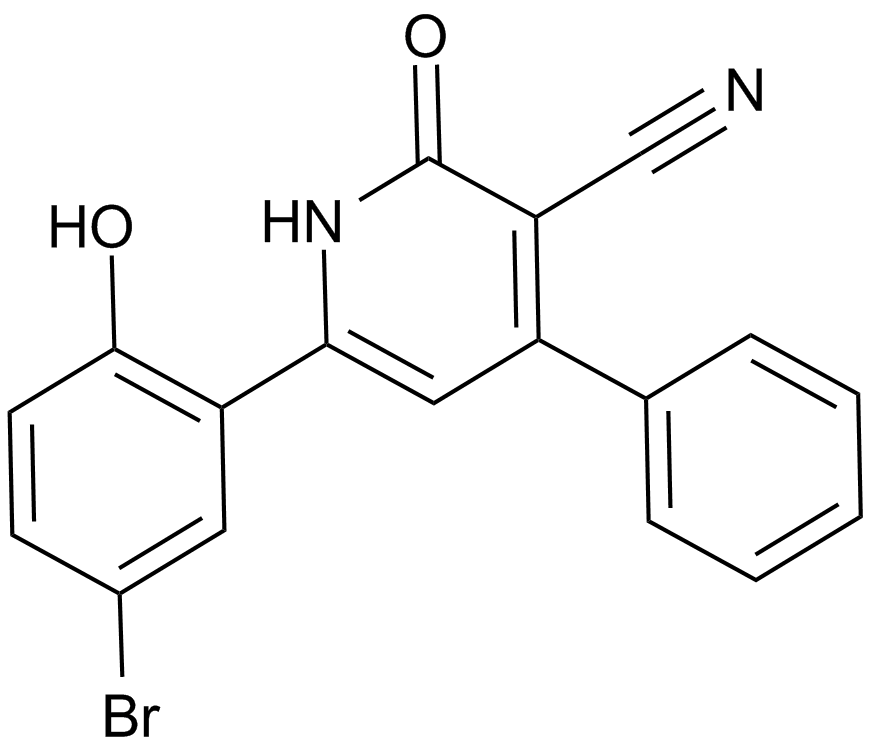 A4521 TCS PIM-1 1Summary: Pim-1 kinase inhibitor,ATP-competitve
A4521 TCS PIM-1 1Summary: Pim-1 kinase inhibitor,ATP-competitve -
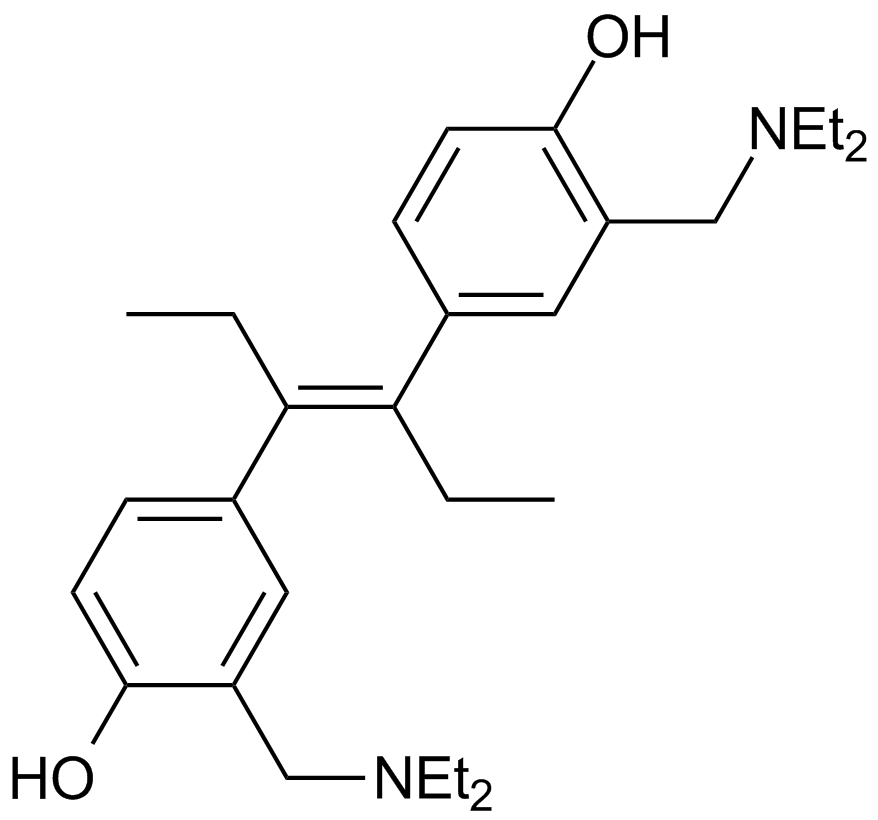 A4514 NSC 33994Summary: Selective JAK2 inhibitor
A4514 NSC 33994Summary: Selective JAK2 inhibitor -
 A3967 Lapatinib DitosylateTarget: EGFR|ErbB-2Summary: EGFR/HER2 inhibitor,potent and selective
A3967 Lapatinib DitosylateTarget: EGFR|ErbB-2Summary: EGFR/HER2 inhibitor,potent and selective

